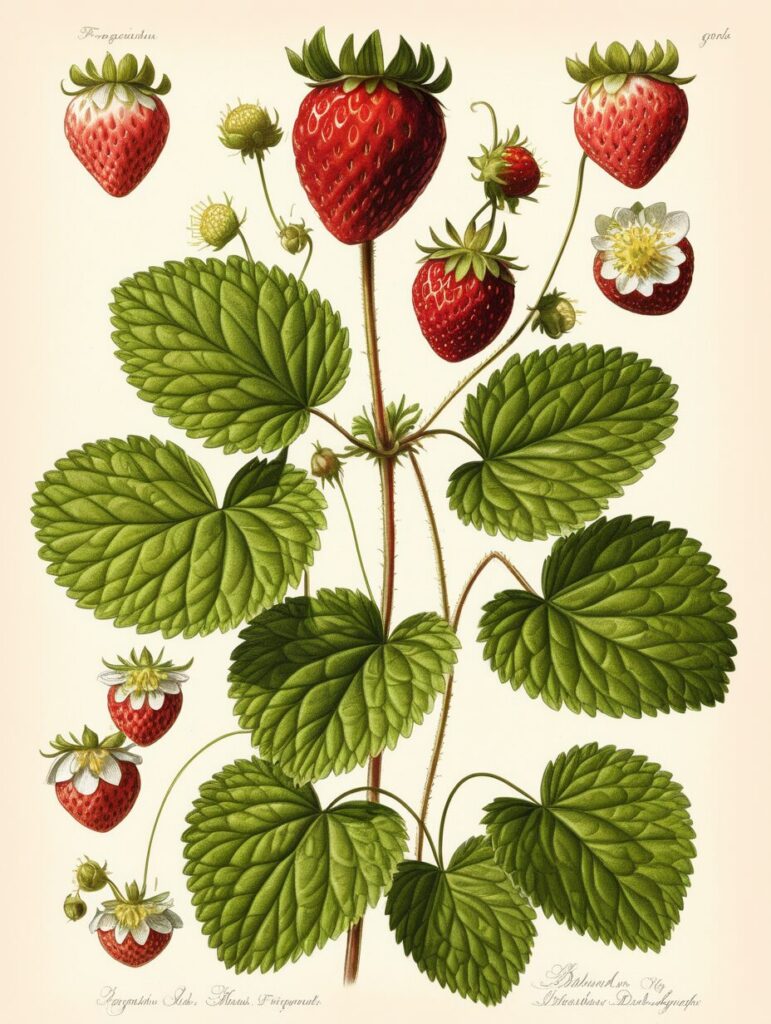Strawberries, with their vibrant red color and luscious taste, are beloved by many worldwide. These juicy fruits are not only a delightful treat but are also packed with nutrients and health benefits, making them a popular choice among fruit lovers and health enthusiasts alike. The cultivated garden strawberry (Fragaria × ananassa) is a relatively recent development in the history of agriculture.


The history of strawberries can be traced back to ancient times when wild strawberries were a common find in various regions. Native species like Fragaria vesca, commonly known as the woodland strawberry, were cherished by ancient Romans who believed these berries had medicinal properties. It wasn’t until the 18th century that strawberries as we know them today began to emerge. This transformation was the result of a happy accident in a French garden where Fragaria virginiana (a species native to North America) and Fragaria chiloensis (from South America) cross-pollinated, giving birth to the hybrid Fragaria × ananassa. This new variety boasted larger fruit and a more robust flavor, qualities that have made it the global favorite we enjoy today.
Strawberries are incredibly versatile and can be grown in various climates, although they thrive best in temperate regions. They prefer well-drained, sandy soil and require a good deal of sunlight to develop their sweet flavor. Strawberries are often propagated using runners, which are horizontal stems that emerge from the mother plant and produce daughter plants. This method is effective in maintaining the genetic consistency of strawberries, ensuring uniformity in fruit quality.
Strawberry plants are generally categorized into three types based on their flowering habits: June-bearing, everbearing, and day-neutral. June-bearing varieties produce a single, large crop per year, typically over a two-to-three-week period. Everbearing varieties produce fruit in two to three separate harvests throughout the season—spring, summer, and fall. Day-neutral types can produce fruit throughout the growing season when conditions are favorable. Selecting the appropriate variety depends on the geographic location and climatic conditions of the area where they are to be cultivated.
Strawberries are a powerhouse of nutrition. They are an excellent source of vitamin C, providing over 100% of the recommended daily intake in just one serving of strawberries (approximately eight strawberries or one cup). Vitamin C is essential for the growth and repair of tissues, and it acts as a powerful antioxidant that helps protect cells from damage caused by free radicals. Moreover, strawberries contain a variety of other important nutrients, including manganese, folate (vitamin B9), and potassium. One of the most compelling health benefits of strawberries is their high antioxidant content, particularly the presence of anthocyanins, which give strawberries their red hue. These antioxidants have been linked to reduced inflammation, improved heart health by lowering blood pressure and cholesterol levels, and a decreased risk of chronic diseases. Specifically, studies have suggested that regular consumption of strawberries can improve endothelial function, which is crucial for maintaining proper blood circulation and cardiovascular health. Additionally, strawberries are rich in dietary fiber, which aids in digestion and helps maintain a healthy weight. The fiber content in strawberries slows down the digestion of sugars, preventing rapid spikes in blood glucose and insulin levels, making them a smart choice for those managing diabetes. The phytochemicals in strawberries, such as ellagic acid, have also shown potential anticancer properties in laboratory studies, suggesting that strawberries may help reduce the risk of certain cancers.
Strawberries are incredibly versatile in the culinary world, offering endless possibilities for creative consumption. Enjoyed fresh, they make a wonderful snack and can be a delightful addition to breakfast cereals, yogurt, or oatmeal. Their natural sweetness pairs perfectly with a touch of tanginess, making them an ideal candidate for creating refreshing smoothies and juices. In the realm of desserts, strawberries are a classic choice. They are often used in making jams, jellies, and preserves, allowing their delightful taste to be enjoyed year-round. Strawberry shortcakes, pies, and tarts showcase their sweetness and natural appeal, while chocolate-dipped strawberries serve as a beloved treat for special occasions. Strawberries can also be incorporated into savory dishes. They add a sweet contrast when tossed in salads with spinach, walnuts, and feta cheese. Their flavor profile complements balsamic vinegar, creating a rich and satisfying dressing. For a more gourmet approach, strawberries can be used in sauces and glazes to accompany meats such as pork and chicken, providing an unexpected twist to traditional dishes.
Strawberries have not only delighted taste buds but have also held a place of cultural and symbolic importance throughout history. In many cultures, strawberries symbolize purity, passion, and healing. The ancient Romans associated strawberries with the goddess Venus due to their heart shape and vibrant red color, which were seen as symbols of love and beauty. The strawberry has also played a role in European folklore and traditions. During medieval times, strawberries were carved into church altars and columns symbolizing perfection and righteousness. In Bavarian culture, small baskets of strawberries were traditionally tied to the horns of cattle in the hope that elves would come and benefit the herd by providing a good harvest. In contemporary times, strawberries continue to captivate the public imagination and are celebrated in festivals across the globe. The National Strawberry Festival in Belleville, Michigan, and the California Strawberry Festival in Oxnard are just a couple of events where communities gather to honor this cherished fruit with food, music, and entertainment.
Strawberries are a remarkable fruit with a rich history spanning centuries and continents. From their accidental cultivation in France to their widespread consumption today, they have become a staple in diets and cuisines worldwide. Beyond their enticing taste and visual appeal, strawberries offer considerable health benefits, playing a role in maintaining heart health, supporting digestion, and potentially reducing cancer risk. Their culinary versatility makes them a favorite ingredient in a wide range of dishes, from sweet to savory. Culturally, they have been symbols of love, passion, and healing for generations. Whether eaten fresh from the vine or incorporated into a culinary masterpiece, strawberries remain a timeless and cherished fruit, deeply rooted in both nature and culture.




